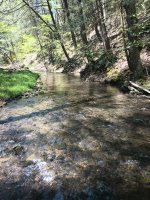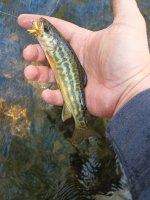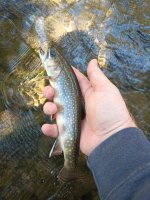Wild_Trouter
Well-known member
- Joined
- Jan 30, 2014
- Messages
- 792
This post and the attached photos are validation for studying maps and not constraining yourself solely to the Class A list. The Class A list should be a starting point only. I know this isn't for everyone and I expend a significant amount of time, $, and energy exploring because I don't like fishing around other people or streams that are pressured. Sometimes I find gold, and other times I just get a lot of exercise and solitude. Today's two prizes made the effort totally worth it.






